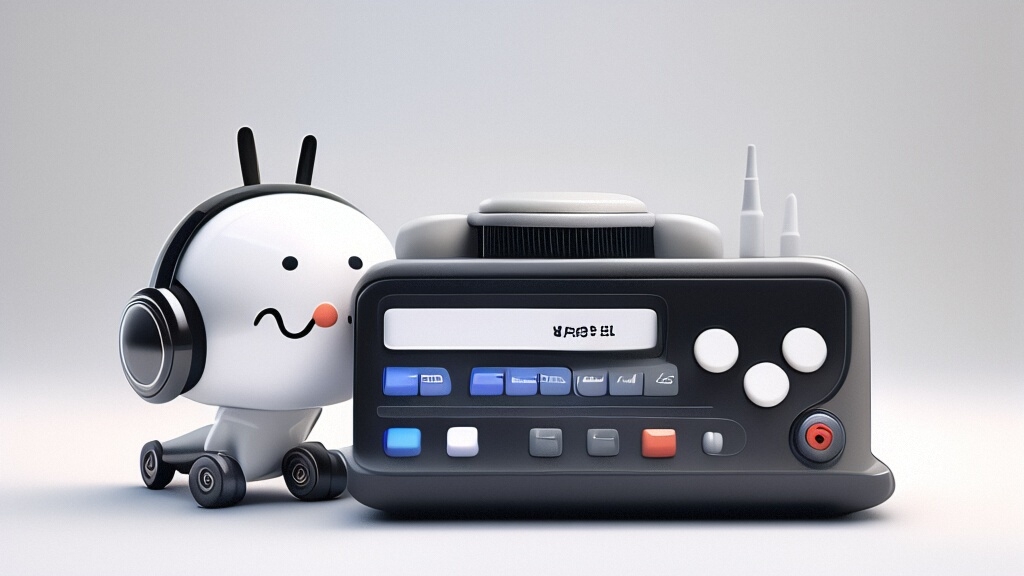🔥关注墨瑾轩,带你探索编程的奥秘!🚀
🔥超萌技术攻略,轻松晋级编程高手🚀
🔥技术宝库已备好,就等你来挖掘🚀
🔥订阅墨瑾轩,智趣学习不孤单🚀
🔥即刻启航,编程之旅更有趣🚀


🌟 Spring Boot 优雅集成 Camunda 7 工作流引擎 🌟
嘿,小伙伴们!今天我们要一起探讨如何在 Spring Boot 应用中优雅地集成 Camunda 7 工作流引擎。Camunda 是一个强大的 BPM(Business Process Management)平台,可以帮助我们定义、执行和监控业务流程。如果你正在寻找一种高效的方式来管理和自动化业务流程,那么这篇文章绝对值得一看!🚀
💡 为什么需要集成 Camunda? 💡
在现代软件开发中,业务流程的管理变得越来越重要。通过使用 BPM 引擎,我们可以将业务规则和流程逻辑抽象出来,使其独立于具体的应用程序逻辑。Camunda 提供了一个完整的解决方案,包括流程建模、执行、监控等功能,非常适合集成到现有的 Spring Boot 应用中。
📚 基础知识 📚
在开始之前,我们需要了解一些基础知识:
- Spring Boot:一个基于 Spring 框架的快速应用开发平台。
- Camunda:一个开源的 BPM 平台,支持 BPMN 2.0 标准。
- BPMN 2.0:Business Process Model and Notation 2.0,一种图形化的流程建模语言。
🛠️ 准备工作 🛠️
首先,确保你的开发环境已经准备好了。如果你还没有安装 IntelliJ IDEA 或者其他 IDE,现在就是时候啦!
🌈 创建 Spring Boot 项目 🌈
打开 Spring Initializr 或者你喜欢的 IDE,新建一个 Spring Boot 项目。接下来,我们将在这个项目中集成 Camunda 工作流引擎。
🎉 添加依赖 🎉
我们需要在 pom.xml 文件中添加 Camunda 的依赖。打开 pom.xml 文件并添加以下依赖:
<dependencies>
<!-- Spring Boot Web Starter -->
<dependency>
<groupId>org.springframework.boot</groupId>
<artifactId>spring-boot-starter-web</artifactId>
</dependency>
<!-- Camunda Spring Boot Starter -->
<dependency>
<groupId>org.camunda.bpm.springboot</groupId>
<artifactId>camunda-bpm-spring-boot-starter-rest</artifactId>
<version>7.x.x</version> <!-- 使用最新版本 -->
</dependency>
<!-- MySQL Driver -->
<dependency>
<groupId>mysql</groupId>
<artifactId>mysql-connector-java</artifactId>
<scope>runtime</scope>
</dependency>
<!-- HikariCP 数据源 -->
<dependency>
<groupId>com.zaxxer</groupId>
<artifactId>HikariCP</artifactId>
<scope>runtime</scope>
</dependency>
<!-- Lombok -->
<dependency>
<groupId>org.projectlombok</groupId>
<artifactId>lombok</artifactId>
<optional>true</optional>
</dependency>
<!-- Test Dependencies -->
<dependency>
<groupId>org.springframework.boot</groupId>
<artifactId>spring-boot-starter-test</artifactId>
<scope>test</scope>
<exclusions>
<exclusion>
<groupId>org.junit.vintage</groupId>
<artifactId>junit-vintage-engine</artifactId>
</exclusion>
</exclusions>
</dependency>
</dependencies>
🎉 配置数据库 🎉
我们需要在 application.properties 文件中配置数据库连接:
spring.datasource.url=jdbc:mysql://localhost:3306/camunda?useUnicode=true&characterEncoding=utf8&serverTimezone=UTC
spring.datasource.username=root
spring.datasource.password=root
spring.datasource.driver-class-name=com.mysql.cj.jdbc.Driver
# 使用 HikariCP 数据源
spring.datasource.type=com.zaxxer.hikari.HikariDataSource
# Camunda 配置
spring.camunda.bpm.admin-creating-enabled=false
spring.camunda.bpm.database.history=full
spring.camunda.bpm.job-executor-acquire-retries=5
spring.camunda.bpm.job-executor-acquire-retry-interval=5000
🎉 创建一个简单的业务流程 🎉
接下来,我们需要创建一个简单的业务流程。在 src/main/resources 目录下创建 bpmn 目录,并在其中创建一个 BPMN 文件,例如 hello.bpmn:
<?xml version="1.0" encoding="UTF-8"?>
<bpmn:definitions xmlns:bpmn="http://www.omg.org/spec/BPMN/20100524/MODEL"
xmlns:bpmndi="http://www.omg.org/spec/BPMN/20100524/DI"
xmlns:dc="http://www.omg.org/spec/DD/20100524/DC"
id="Definitions_1"
targetNamespace="http://bpmn.io/schema/bpmn">
<bpmn:process id="HelloProcess" isExecutable="true">
<bpmn:startEvent id="StartEvent_1"/>
<bpmn:sequenceFlow id="SequenceFlow_1" sourceRef="StartEvent_1" targetRef="ServiceTask_1"/>
<bpmn:serviceTask id="ServiceTask_1" implementation="com.example.demo.service.HelloService#greet">
<bpmn:extensionElements>
<camunda:inputParameter name="name">Camunda</camunda:inputParameter>
</bpmn:extensionElements>
</bpmn:serviceTask>
<bpmn:endEvent id="EndEvent_1"/>
<bpmn:sequenceFlow id="SequenceFlow_2" sourceRef="ServiceTask_1" targetRef="EndEvent_1"/>
</bpmn:process>
<bpmndi:BPMNDiagram id="BPMNDiagram_1">
<bpmndi:BPMNPlane id="BPMNPlane_1" bpmnElement="HelloProcess">
<bpmndi:BPMNShape id="_BPMNShape_StartEvent_2" bpmnElement="StartEvent_1">
<dc:Bounds x="100" y="100" width="36" height="36"/>
</bpmndi:BPMNShape>
<bpmndi:BPMNShape id="_BPMNShape_ServiceTask_3" bpmnElement="ServiceTask_1">
<dc:Bounds x="240" y="100" width="100" height="80"/>
</bpmndi:BPMNShape>
<bpmndi:BPMNShape id="_BPMNShape_EndEvent_4" bpmnElement="EndEvent_1">
<dc:Bounds x="400" y="100" width="36" height="36"/>
</bpmndi:BPMNShape>
<bpmndi:BPMNEdge id="_BPMNEdge_SequenceFlow_2" bpmnElement="SequenceFlow_1">
<di:waypoint x="136" y="118"/>
<di:waypoint x="240" y="118"/>
</bpmndi:BPMNEdge>
<bpmndi:BPMNEdge id="_BPMNEdge_SequenceFlow_3" bpmnElement="SequenceFlow_2">
<di:waypoint x="340" y="118"/>
<di:waypoint x="400" y="118"/>
</bpmndi:BPMNEdge>
</bpmndi:BPMNPlane>
</bpmndi:BPMNDiagram>
</bpmn:definitions>
🔍 代码解析 🔍
<bpmn:startEvent>:定义了流程的开始节点。<bpmn:serviceTask>:定义了一个服务任务,并指定了实现类为HelloService中的greet方法。<camunda:inputParameter>:定义了服务任务的输入参数。
🎉 创建业务逻辑 🎉
接下来,我们需要创建业务逻辑。在 src/main/java/com/example/demo/service 目录下创建以下服务类:
package com.example.demo.service;
import org.camunda.bpm.engine.delegate.DelegateExecution;
import org.camunda.bpm.engine.delegate.JavaDelegate;
import org.springframework.stereotype.Service;
@Service
public class HelloService implements JavaDelegate {
/**
* 业务逻辑实现。
*
* @param execution 当前执行对象
*/
@Override
public void execute(DelegateExecution execution) {
String name = (String) execution.getVariable("name");
System.out.println("Hello, " + name + "!");
}
}
🔍 代码解析 🔍
HelloService类:实现了JavaDelegate接口,该接口是 Camunda 用来执行流程任务的。execute方法:定义了业务逻辑,这里只是简单地打印一条消息。
🎉 启动 Spring Boot 应用 🎉
现在我们已经配置好了数据库、定义了业务流程,并实现了业务逻辑。接下来,我们只需要启动 Spring Boot 应用即可。
打开 src/main/java/com/example/demo/Application.java 文件,并添加主类:
package com.example.demo;
import org.springframework.boot.SpringApplication;
import org.springframework.boot.autoconfigure.SpringBootApplication;
@SpringBootApplication
public class Application {
public static void main(String[] args) {
SpringApplication.run(Application.class, args);
}
}
🎉 部署并运行流程 🎉
启动应用后,你可以通过浏览器访问 Camunda 的管理界面来部署流程定义并运行流程实例:
- 访问
http://localhost:8080来打开 Camunda 的管理界面。 - 登录后,在 Modeler 中上传之前创建的 BPMN 文件。
- 在 Cockpit 中部署流程定义。
- 创建一个新的流程实例并运行。
🎉 编写测试 🎉
为了验证我们的业务流程是否按预期工作,我们可以编写一些单元测试。在 src/test/java/com/example/demo 目录下创建测试类:
package com.example.demo;
import org.camunda.bpm.engine.runtime.ProcessInstance;
import org.camunda.bpm.engine.test.Deployment;
import org.junit.jupiter.api.Test;
import org.springframework.beans.factory.annotation.Autowired;
import org.springframework.boot.test.context.SpringBootTest;
import static org.camunda.bpm.engine.test.assertions.ProcessEngineTests.assertThat;
import static org.camunda.bpm.engine.test.assertions.ProcessEngineTests.processEngine;
@SpringBootTest
public class HelloProcessTest {
@Autowired
private HelloService helloService;
@Test
@Deployment(resources = "hello.bpmn")
public void testHelloProcess() {
// 启动流程实例
ProcessInstance processInstance = processEngine().getRuntimeService()
.startProcessInstanceByKey("HelloProcess");
// 验证流程实例已结束
assertThat(processInstance).isEnded();
// 验证业务逻辑已执行
// 这里假设业务逻辑会在控制台上打印消息
// 在实际应用中,可以通过日志或其他方式验证
}
}
🔍 代码解析 🔍
@Deployment注解:指定要部署的 BPMN 文件。testHelloProcess方法:启动流程实例,并验证流程实例是否按预期结束。
🌟 结语 🌟
怎么样,是不是感觉非常简单又实用呢?通过简单的几行代码,我们就实现了在 Spring Boot 应用中集成 Camunda 工作流引擎。如果你对这个话题还有更多好奇的地方,或者在实践中遇到了问题,记得随时提问哦!🎈
❓ 互动提问 ❓
亲爱的读者们,你们在使用 Camunda 时遇到过哪些有趣的问题?或者有没有什么特别想要深入了解的内容?欢迎留言分享,让我们一起探讨吧!
注意:别忘了在实际项目中考虑异常处理和安全性问题。此外,如果需要更复杂的业务流程,可以考虑扩展 Camunda 的高级功能。祝大家开发愉快!🎈🎈🎈























 1795
1795

 被折叠的 条评论
为什么被折叠?
被折叠的 条评论
为什么被折叠?










